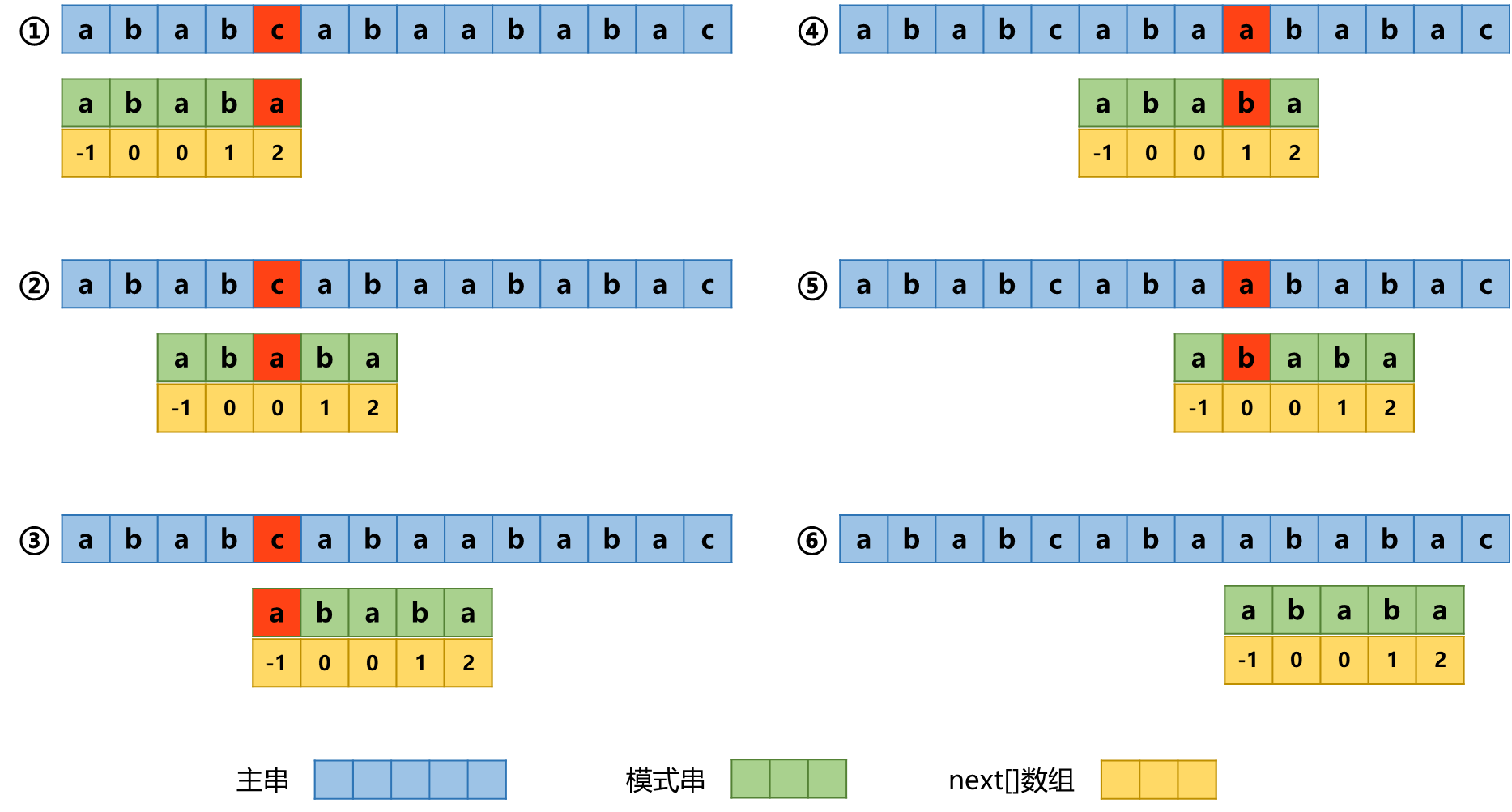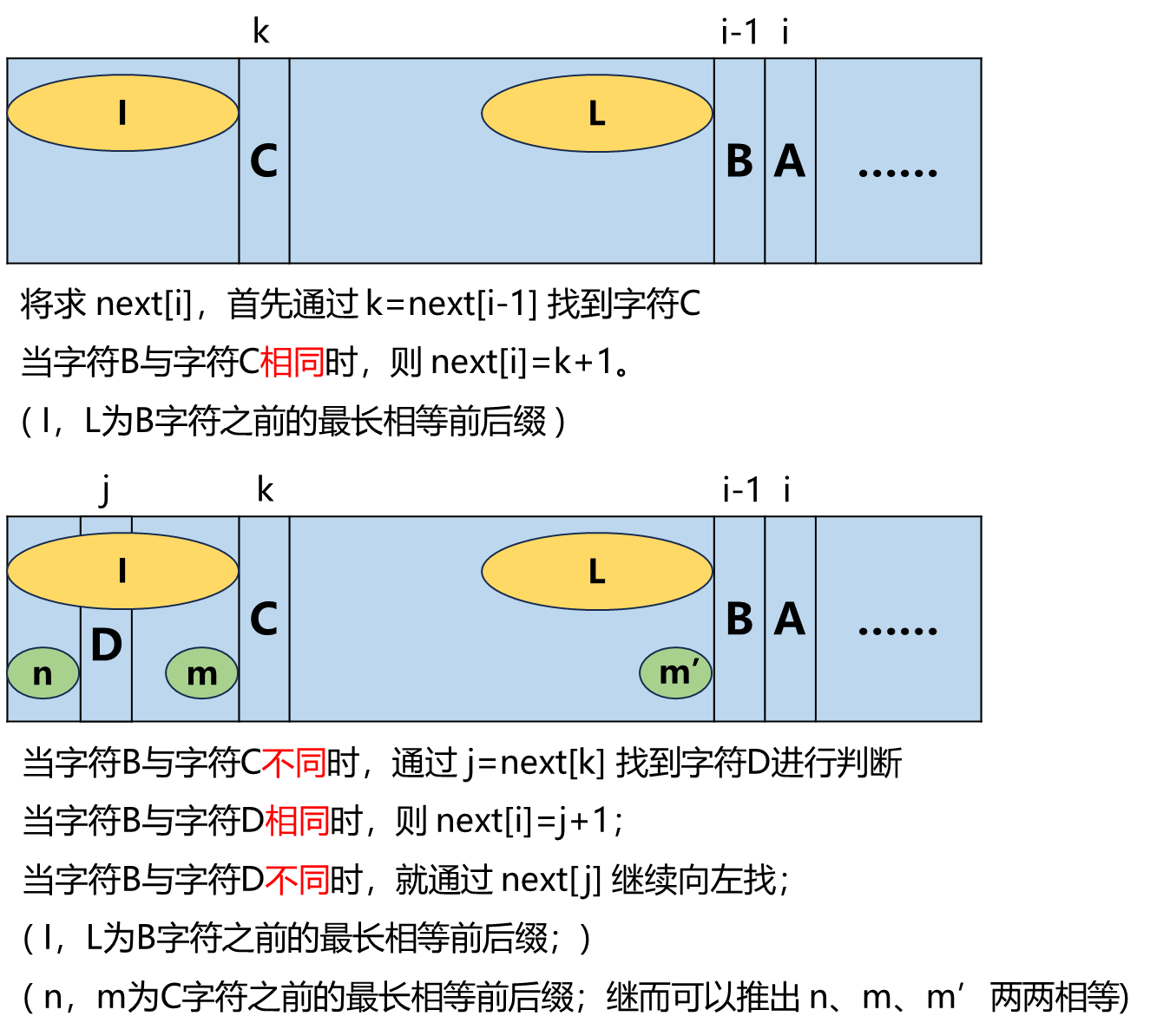KMP
简介
KMP算法是一种改进的字符串匹配算法,由D.E.Knuth、J.H.Morris和V.R.Pratt提出,因此人们称它为克努特—莫里斯—普拉特操作(简称KMP算法)。KMP算法的核心是利用匹配失败后的信息,尽量减少模式串与主串的匹配次数以达到快速匹配的目的。
实现
构造 next[] 数组
-
前缀:除最后一个字符外,字符串的所有头部子串
-
后缀:除第一个字符外,字符串的所有尾部子串
-
前后缀相等的最大长度:$\{a, ab, aba\} \cap \{b, ab, bab\}=\{ab\}$
-
next[i]:模式串 s[0...i-1] 的相等前后缀的最大长度
| 字串 | 前缀 | 后缀 | 相等前后缀的最大长度 |
|---|---|---|---|
| "" | $\phi$ | $\phi$ | next[0] = -1 |
| "a" | {} | {} | next[1] = 0 |
| "ab" | {"a"} | {"b"} | next[2] = 0 |
| "aba" | {"a", "ab"} | {"a", "ba"} | next[3] = 1 |
| "abab" | {"a", "ab", "aba"} | {"b", "ab", "bab"} | next[4] = 2 |
匹配

求解 next[] 数组

代码
public class Solution
{
public static void solution(String s1, String s2)
{
ArrayList<Integer> ans = new ArrayList<>();
int[] next = getNext(s2);
int i = 0, j = 0;
while (i < s1.length())
{
if (s1.charAt(i) == s2.charAt(j))
{
i++;
j++;
}
else if (next[j] == -1) i++;
else j = next[j];
if (j == s2.length())
{
ans.add(i - j);
j = 0;
}
}
if (!ans.isEmpty())
System.out.println(ans.stream().map(String::valueOf).collect(Collectors.joining(" ")));
else
System.out.println(-1);
}
public static int[] getNext(String s)
{
if (s.length() == 1) return new int[]{-1};
int[] next = new int[s.length()];
int pos = 2, cn = 0;
next[0] = -1;
next[1] = 0;
while (pos < s.length())
{
if (s.charAt(pos - 1) == s.charAt(cn))
next[pos++] = ++cn;
else if (cn > 0)
cn = next[cn];
else
next[pos++] = 0;
}
return next;
}
public static void main(String[] args)
{
solution("ababcabaababac", "ababa");
}
}


